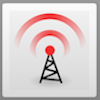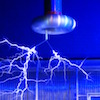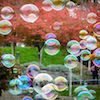Friday Flyer - February 2, 2024

Spotlight on the University of Notre Dame QuarkNet Center
The Notre Dame center had a busy 2023 and is already heading for more in 2024. In addition to the regular Monday afternoon meetings, ND teachers were quite active. Last February, Pat Mooney and Caroline Fletcher exhibited an e/m apparatus and a cloud chamber at Science Alive! in the St. Joseph Public Library while Rebekah Randall and her students at Canterbury High School participated in International Muon Week. Jeremy Wegner and his students from Winamac Community High School, along with one of Rebekah's students, participated in a CMS masterclass at Notre Dame last March. Students from St. Joseph High School participated remotely. These groups plan to be back for International Masterclasses 2024: Winamac will do Belle II while St. Joe, Canterbury, and Watervliet High School in Michigan will focus on ATLAS.
QuarkNet summer at Notre Dame is traditionally busy with student-teacher-mentor research and 2023 was no exception. Teacher and students did Cosmic Ray Studies with the Cosmic Ray Detector, the Cosmic Watch (CW), and Project GRAND. The Digital Visualization Theater group worked on updating computer hardware and software but also branched out substantially into VR. Other projects included Astrophysics, magnetic phenomena, building and testing CO2 sensors (with Indiana University South Bend), and CMS Data. CMS Data extended out past Notre Dame with remote participation in the CMS Open Data Workshop at Fermilab. Cosmic Ray Studies also ventured out with an online poster and a proceedings paper for the International Cosmic Ray Conference 2023 and preparation of a talk for the African Conference on Fundamental and Applied Physics 2023.
Things did not let up in autumn 2023. Students at Watervliet did a lab with the Cosmic Watch and Winamac also used the Cosmic Watch for International Cosmic Day. Both Winamac and St. Joe participated in World Wide Day Day. And just this past week the teachers got together on Monday for a talk on laser physics via Zoom from Colorado State.

CMS masterclass measurement at Notre Dame.

News from QuarkNet Central
Mentors! The QuarkNet 2024 RFP is out: Let your QuarkNet staff member know if you did not get it or if you have any questions. Your form response is due in one week, on February 9.
Milestone! We've posted Data Activity #40: Angles and Dimuons, in which your students can learn about particle interactions by measuring the angles between muon tracks, our 40th entry into the Data Activities Portfolio. Try it with your students.
Beamline for Schools 2024: The Beamline for Schools (BL4S) 2024 competition is now open for high school teams to compete for the chance to perform an experiment at CERN or DESY. Learn more: Read the announcement from CERN!
Teacher research at Fermilab? You bet, through the TRAC Program. Read about it in Fermilab News there is a link toward the bottom that leads to the application, which is due February 18.
Reminder: The Kavli Institute for Theoretical Physics (KITP) will be hosting their 2024 Teachers' Conference in Santa Barbara, CA, on Saturday, April 27, 2024. This year's topic is "Supermassive Black Holes and their Destructive Tidal Forces." Registration is now open. Note that KITP has financial aid for travel and lodging that is awarded on a rolling basis.
International Masterclasses: Has your center registered for International Masterclasses yet? It is not too late! We still have a (reduced) number of slots, so go ahead and check out the Fermilab masterclass videoconference schedule, pick an open date or time, and send an email to Ken or Shane. Want more information? Read the latest circular.
Speaking of which, it is also time for masterclass orientations. These are designed to help mentors, tutors, and teachers learn about the masterclass measurement they will facilitate, as well as the nuts and bolts of running a masterclass. Inquire with Shane, Spencer, or Ken and schedule it at a time convenient for your group..

Physics Experiment Roundup
APS Physics has some interesting and potentially profound news from experiments. First, they note that we have measurements deviating from theory. And that may go for the Higgs as well. There is also evidence of a new kind of magnetism. Time it out with improvements to atomic clocks.
Fermilab News also has interesting articles. CMS is searching for new particles, and Fermilab is upgrading magnets for Oak Ridge National Laboratory. Fermilab is also doing some great work in physics applications, including the application of electron beams to remove forever chemicals from water and compact accelerator technology for industry.

Resources
What a celebration it will be: Interactions reports that CERN will turn 70 in September! And they are already gearing up. How will we mark this in QuarkNet and in our classrooms? Good question: stay tuned but also make suggestions.
We have some interesting videos. The first is How Fermilab made the particle beam for Muon g-2. the second is another contribution by Don Lincoln, this time explaining what the Standard Model Lagrangian is all about. Don does a great job of smoothing out some tough sledding.
We tip our hats to Marge Bardeen, who found this fascinating IEEE Spectrum article about magnetic amplifiers, which were once an alternative to vacuum tubes. Too young to know about vacuum tubes? Read the explanation in engineering.com. What are they good for? Well, you can still build a one-tube regenerative radio.

Just for Fun
If Don Lincoln got you going with Lagrangians, here is some more upper-level undergrad physics nostalgia: Lagrangian vs. Hamitonian Mechanics, a bit of TdS tedium, and the Dirac equation.
If those are not your cup of tea, or even if they are, let's go from the sublime to the silly with some classic video spoofs on science fiction. For example, we have the 50's-style Battlestar Galactica premake. Continuing with BSG, there is the imagined Stanley Kubrick version which is only outdone by the hypothetical Kubrick Star Wars.
Let's end by enjoying those fast radio bursts from xkcd. There. That's it.
QuarkNet Staff
Mark Adams: adams@fnal.gov
Ken Cecire: kcecire@nd.edu
Spencer Pasero: spasero@fnal.gov
Shane Wood: swood5@nd.edu
